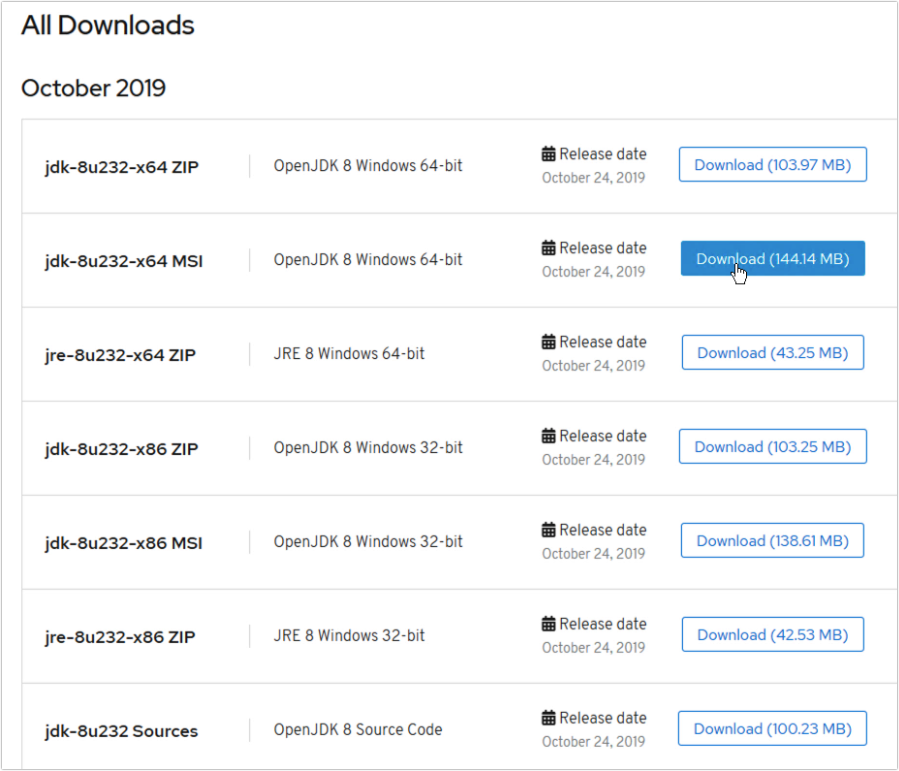

- #REDHAT OPENJDK SUPPORT HOW TO#
- #REDHAT OPENJDK SUPPORT INSTALL#
- #REDHAT OPENJDK SUPPORT MANUAL#
- #REDHAT OPENJDK SUPPORT UPGRADE#
- #REDHAT OPENJDK SUPPORT SERIES#
#REDHAT OPENJDK SUPPORT HOW TO#
In this article, we explored how to use the Ansible Automation Platform to create an instance in GCP. You can now check your instance by navigating to GCP console. The output will display the status of the job and the progress of the instance creation process. Select the credentials and execution environment you previously created under the selected category (Figure 4). Source_image: "projects/ubuntu-os-cloud/global/images/family/ubuntu-1804-lts"

#REDHAT OPENJDK SUPPORT INSTALL#
RUN ansible-galaxy collection install google.cloud Once we are successful in logging into SA, we need to create a container image by using a Dockerfile containing the following context: FROM /ansible-automation-platform-22/ee-supported-rhel8:latest If you don't have Podman installed, you can use Docker instead, but we recommend using Podman for a more efficient container experience. Podman is a powerful and secure open-source tool that can be used as an alternative to Docker, with the added benefits of not requiring a daemon to run containers and having a more lightweight footprint. To log in to SA, you'll need to use a container runtime such as Podman or Docker. Before you can complete any of the following tasks, you must create a registry service account. The operating system on your local machine must be Red Hat Enterprise Linux (RHEL).Ģ. In this blog post, we'll dive into the details of how to use the Ansible Automation Platform to create Instances in GCP and explore some of the benefits of using this powerful automation tool. By using the Ansible Automation Platform, we can create a streamlined process for deploying Instances in GCP, reducing errors and saving time.
#REDHAT OPENJDK SUPPORT MANUAL#
The Ansible Automation Platform is a powerful tool that enables you to manage your infrastructure more efficiently, with less manual intervention. This time, we'll take things a step further and leverage the power of the Ansible Automation Platform to automate the process. In our previous article, we explored how to use the Ansible Automation Platform CLI to create an instance in GCP. Part 3: How to create a GCP instance via workflow and Ansible Part 2: How to create a GCP instance using Ansible Automation Part 1: How to create an instance on GCP using Ansible CLI
#REDHAT OPENJDK SUPPORT SERIES#
You will know it is properly installed when you see the 11.įor those that want or need more technical details about installing Java 8 and Java 11 then make sure you read RedHat's excellent blog post about this subject.This series covers the end-to-end process of creating an instance on GCP using Red Hat Ansible Automation Platform. It will output "11.0." or something similar. $ sudo alternatives -config javac #(select the Java 11 option, usually option '2', then hit enter to save)Ĭonfirm the correct Java version is being used by executing java -version. $ sudo alternatives -config java #(select the Java 11 option, usually option '2', then hit enter to save) $ sudo yum -y install java-11-openjdk-devel Stop all processes that use Java before continuing. Most application devs have finally moved on to support the newest 'long-term support' (LTS) version of Java, which is Java 11.
#REDHAT OPENJDK SUPPORT UPGRADE#
Today's article is going ot focus on how to upgrade from Java 8 to Java 11 on CentOS/RHEL 7 and CentOS/RHEL 8 distributions.Įven though it is still widely supported, Java 8 shouldn't be used anymore.


 0 kommentar(er)
0 kommentar(er)
